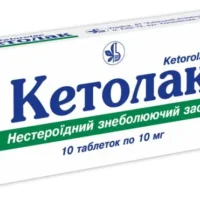Description
Ibuprom Sprint Capsules 200 mg. №6
Composition
Each capsule contains 200 mg of ibuprofen.
Mechanism of Action
Ibuprom Sprint Capsules contain ibuprofen, a nonsteroidal anti-inflammatory drug (NSAID) that inhibits the production of prostaglandins, reducing pain and inflammation.
Pharmacological Properties
Ibuprofen in Ibuprom Sprint Capsules exerts analgesic, antipyretic, and anti-inflammatory effects by blocking the enzymes responsible for prostaglandin synthesis.
Indications for Use
Ibuprom Sprint Capsules are indicated for the relief of mild to moderate pain, including headaches, dental pain, menstrual cramps, and muscle aches.
Contraindications
Do not use Ibuprom Sprint Capsules if you have a history of allergic reactions to ibuprofen or other NSAIDs, peptic ulcers, or if you are in the third trimester of pregnancy.
Side Effects
Common side effects may include gastrointestinal irritation, increased risk of cardiovascular events, and allergic reactions. Consult a healthcare provider if any adverse effects occur.
Usage Instructions
The recommended dosage for adults is 1-2 capsules every 4-6 hours as needed. Do not exceed 6 capsules in 24 hours. Swallow the capsules whole with a full glass of water; do not crush or chew them.
Benefits Compared to Analogues
Ibuprom Sprint Capsules offer effective pain relief and inflammation reduction, supported by clinical evidence demonstrating their efficacy and comparative effectiveness against similar NSAIDs.
Suitable Patient Groups
Ibuprom Sprint Capsules are suitable for adults seeking relief from mild to moderate pain. Consult a healthcare provider for appropriate use in children, the elderly, or individuals with specific medical conditions.
Storage and Shelf Life
Store Ibuprom Sprint Capsules in a cool, dry place away from direct sunlight. Check the expiration date on the packaging and do not use expired capsules.
Packaging Description
Ibuprom Sprint Capsules are available in packs of 6 capsules. The packaging is designed to maintain the integrity of the capsules and provide essential information for proper use.
Clinical Evidence and Proven Effectiveness
Ibuprofen in Ibuprom Sprint Capsules has been extensively studied, with research demonstrating its efficacy in pain relief and inflammation reduction. Clinical trials have shown the drug’s effectiveness compared to other NSAIDs, making it a trusted choice in pain management.





